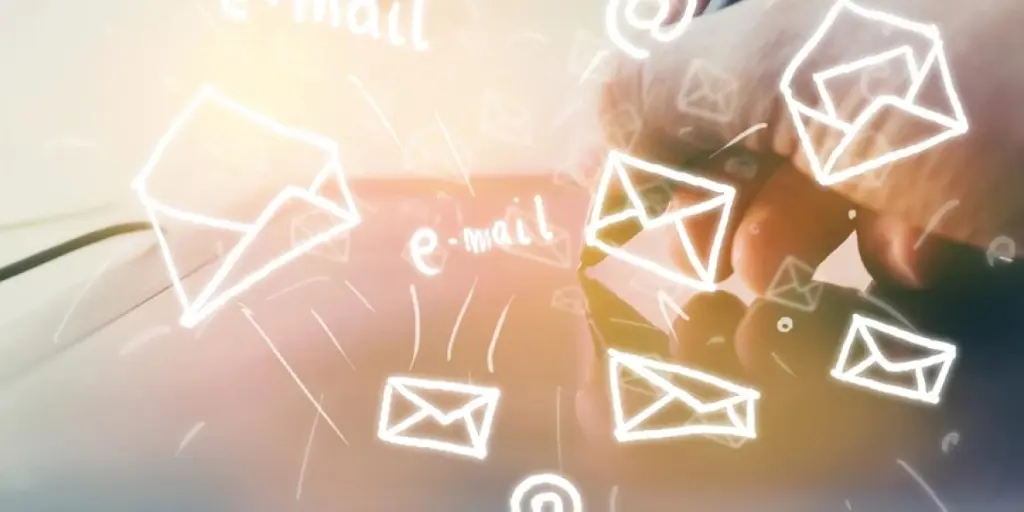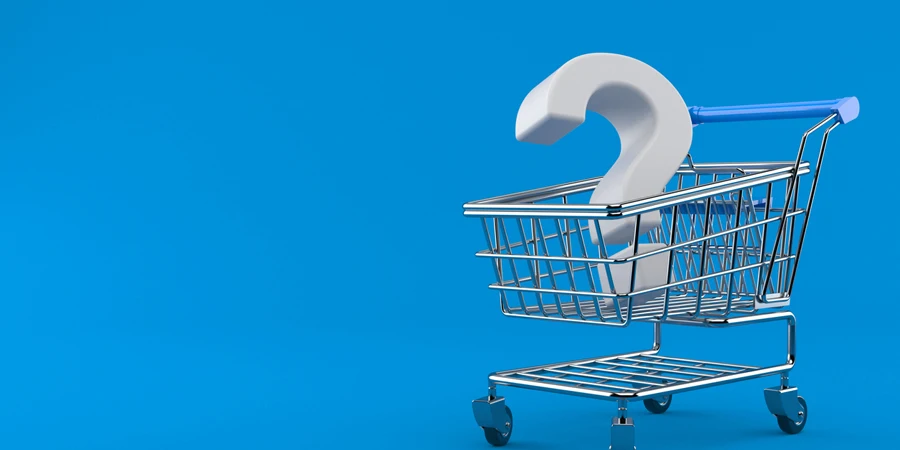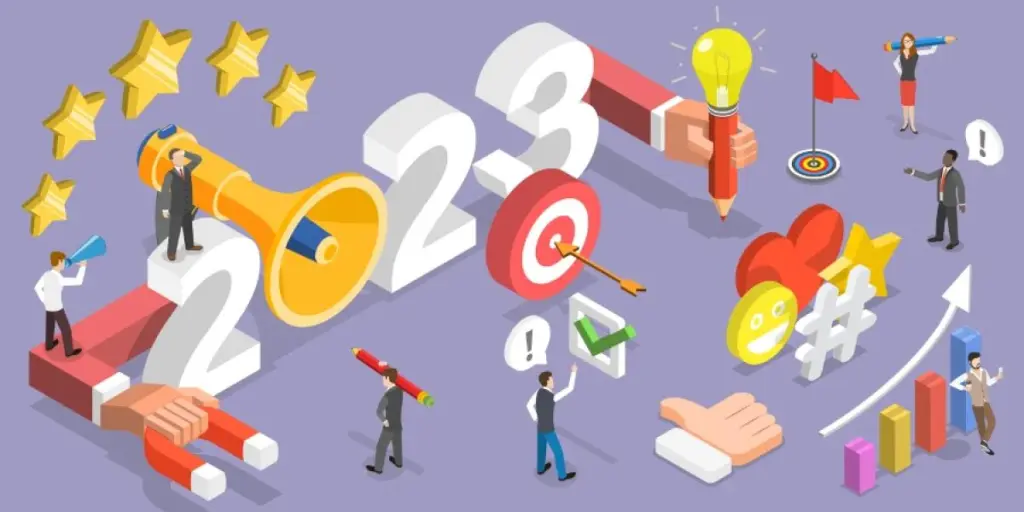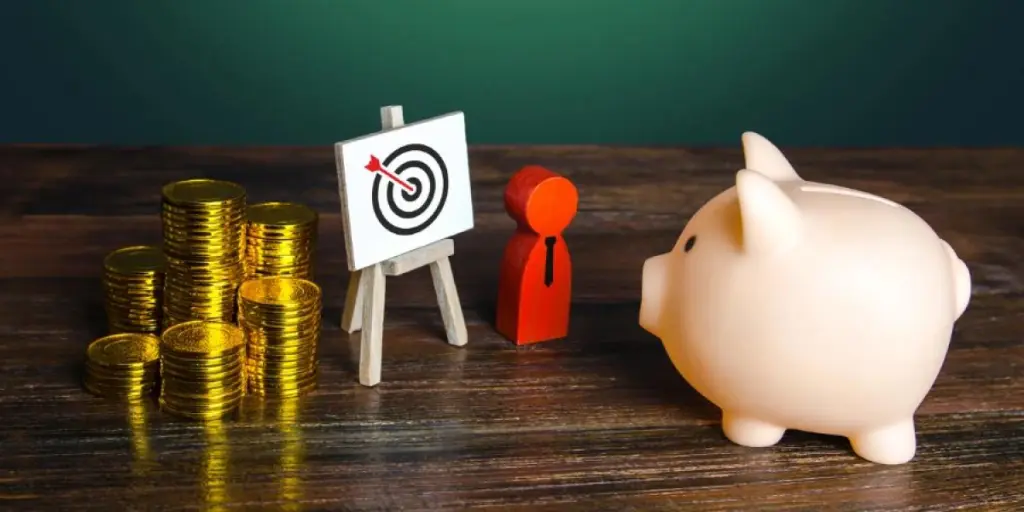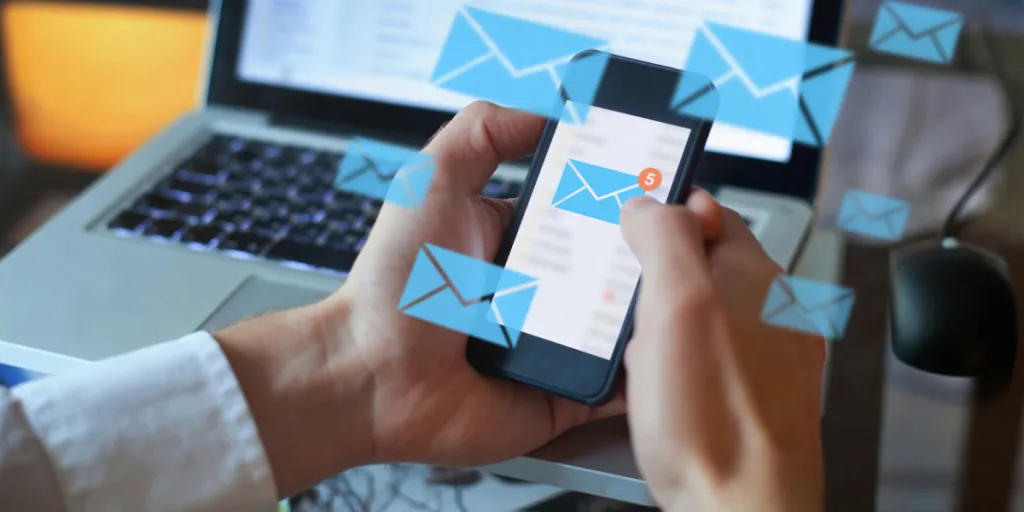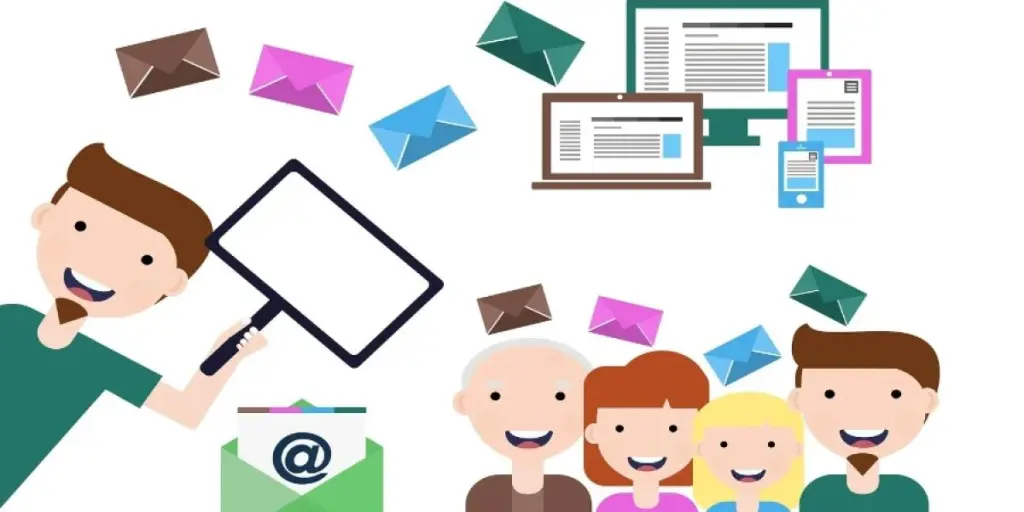So, you’ve successfully built a robust emailing list for your growing business? Great!
What’s next? Focus on adding more people to the email list because once a subscriber, always a customer, right?
Wrong!
While building a solid email list is essential, acquiring new subscribers and converting them doesn’t automatically make them long-term customers.
Instead, you have to nurture them throughout your relationship with them through a lifecycle email marketing approach. This involves carefully engaging with them at every stage—from first finding out about your brand to becoming a loyal customer.
To help you build a rock-solid email lifecycle marketing strategy, we’ve put together tips and examples you can use for inspiration.
Let’s get started.
What is lifecycle email marketing?
In simple terms, lifecycle email marketing is an approach that’s aimed at connecting with prospects throughout their lifecycle with your brand, right from learning about your business to becoming a loyal customer.
It involves sending targeted emails to them at each stage to move them further down your funnel to the point they become loyal brand advocates.
The importance of lifecycle email marketing
The concept of lifecycle email marketing is built on a simple premise: the changing requirements of customers. As a prospect moves through your funnel, their needs change. Your content has to keep up with these evolving preferences to ensure that it’s relevant to them.
For instance, a prospect would look to learn more about your brand in the awareness stage. But once they’ve become your customers, their needs would revolve around your brand caring for them.
And that’s where lifecycle marketing becomes important. It helps you:
- Send the right message at the right time
- Keep your brand relevant to customers
- Increase customer retention and loyalty
- Build personalized experiences
Types of lifecycle emails
Now that you know about the importance of lifecycle email marketing, let’s take a look at the different types of emails you can send based on the stages your customers are:
- Welcome emails: Welcome emails are those that you send to your subscribers when they sign up for your email list. It’s a way to welcome them to your network.
- Abandoned cart emails: Abandoned cart emails help you with customer retention and also help to boost your conversion rates. You send them when customers abandon their carts before completing the purchase.
- Browse abandonment emails: Sometimes, new customers may visit your site but leave without making a move to purchase. Browse abandonment emails remind them to continue their journey and possibly buy an item.
- Post-purchase emails: Post-purchase emails are used to connect with customers just after they’ve made a purchase. Typically, these include order confirmations, shipping details, review requests, and related product recommendations.
- Win-back emails: Win-back emails remind inactive customers of your business and are aimed at getting them to shop from you again. For example, this win-back email from Sears reminds customers to reactivate their email address, while offering good deals.
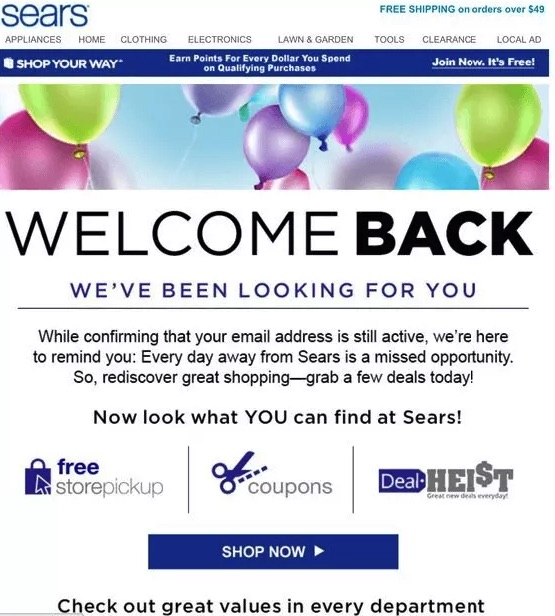
- VIP customer emails: Lastly, VIP customer emails appreciate your most valuable customers and encourage them to stay with you. You can use them to make your customers feel special.
The stages of lifecycle email marketing
As mentioned, lifecycle email marketing involves sending different targeted emails depending on the recipient’s stage in the customer lifecycle.
So, let’s take a look at the different stages of the customer lifecycle for your email campaigns.
1. Awareness
The first and most crucial stage in lifecycle email marketing is the awareness stage where you make prospects aware of your brand and how it can cater to their needs.
Think of this lifecycle email marketing stage as a virtual tour of your business. Customers might not purchase anything at first, but they know you exist and that’s the first step in a successful sales funnel.
It’s an important part of the lifecycle email marketing strategy as it sets the stage for turning these prospects into leads.
Here’s an example of an awareness email from Beekeeper’s Naturals:
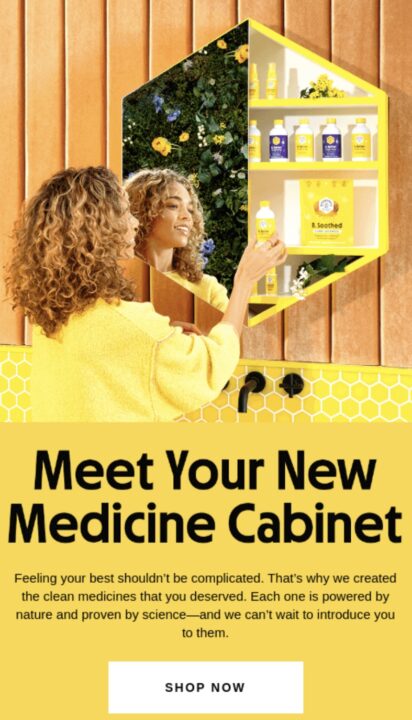
Without using too many words, it tells prospects that it’s available to care for their natural medicine needs. Now that the consumer knows the brand, they know where to buy natural health products.
This lifecycle email also includes a strong and prominent CTA. If the customer is interested in looking at what’s available, they can check it out right away. The CTA takes them directly to the online store where they can browse and purchase the products.
2. Engagement
This is the second stage of the customer lifecycle and it’s where prospects start engaging with your brand. You’ve successfully piqued their interest by making them aware of your products, and now they want to know more.
At this point, your lifecycle email marketing campaign should focus on engaging with them and providing materials they need to learn more about your brand and offerings. That way, they can always be in the loop about everything going on with you.
Here’s an example of a good customer engagement email from Winnie Lou:
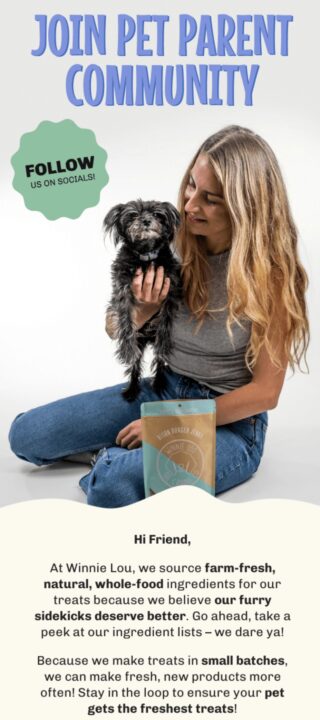
It speaks to the reader and asks them to join other pet parents on social media platforms where they can learn about new deals and updates. Its prominent CTA, positioned right below the text, takes readers directly to follow Winnie Lou on social media.
The headline clearly talks about joining the pet parent community as well, setting the tone for what the email is going to talk about.
The idea behind such lifecycle emails is to engage the prospects further. In this case, the brand is trying to ensure that they have their attention on social media.
It also refers to the recipient as a ‘friend,’ an endearing term that breeds trust between your brand and a new prospect.
3. Conversion
If your new prospect has made it this far into the email marketing funnel, it means they’re considering making a purchase. Hence, you want to capitalize on their interest and quickly convert them into paying customers before you lose their attention.
As easy as this may sound, it is one of the trickiest stagest in the email marketing lifecycle. While you want to compel them into action, you also don’t want to sound like a yappy salesman to them.
The solution?
Put your offer out there with a simple and clear message, occasionally using psychological triggers to get them to act.
For instance, look at the conversion email below by Freestyle:
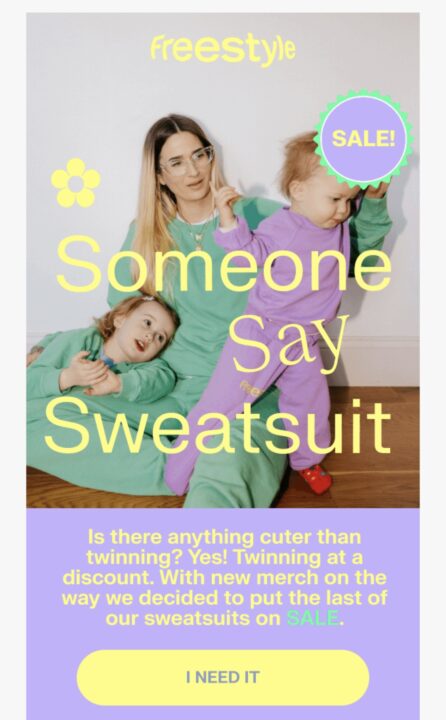
This email uses discounts to compel the prospects to buy from the brand. Note how they appeal to parents with the photo of a mom and her kids wearing sweatsuits.
Additionally, the CTA is a simple, three-word button that creates a sense of urgency in the prospect: “I need it.” Combine that with the text above, stating that they’re putting the “last” of their sweatsuits on sale, and you can successfully tap into FOMO.
This simple CTA is powerful enough to give them a final nudge and convert them to paying customers.
4. Retention
Now that your customer has finally made a purchase, do you just leave them and hop on to the next potential customer? Absolutely not!
In this next stage of email lifecycle marketing, you have a good chance of turning a one-off customer into a regular one. This is where you introduce post-purchase emails to ensure your customer has the best personalized experience. From order dispatch to upsells, you can use these emails to keep your customers engaged.
Here are some helpful tips for customer retention in email lifecycle marketing:
- Go the extra mile by contacting them and asking for feedback on your goods or services.
- Provide helpful tips and information about the product to ensure they get the best user experience.
- Improve your products based on customer feedback.
- Keep customers updated and encourage them to try new products.
This email from Yoto is a great one that aims to engage existing customers by telling them that the brand has listened to their requests:
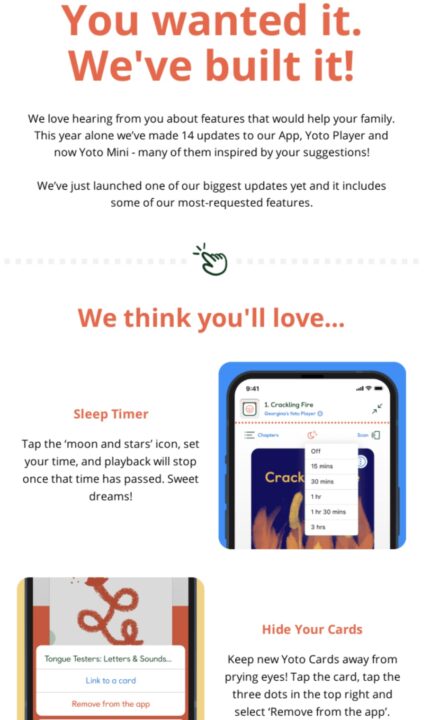
This email focuses on two key aspects of email lifecycle marketing: implementing customer feedback, and informing them about new updates.
The goal is to make customers feel valued by starting with, “We love hearing from you.” Then, it goes further to talk about new and updated features, while making personalized recommendations to the customer.
This customer retention marketing strategy makes customers feel appreciated and increases their chances of sticking with your brand.
5. Loyalty
Customer loyalty is the ultimate goal of any successful business enterprise. You don’t just want a one-time customer, you want to build customer loyalty.
And the only way to reach this stage is by nurturing your existing customers and turning them into loyal brand advocates through lifecycle email marketing.
If you put a lot of effort into making your customers happy, they’ll stick to your business and refer it to others as well.
In fact, a Bond Brand Loyalty report shows that 73% of consumers are more likely to recommend brands with good loyalty programs. More importantly, 80% of them will stick with a brand that has a loyalty program.
And where does lifecycle email marketing come in?
Well, you can use email campaigns like the one below to get customers to register for your loyalty programs and set them on the path to becoming long-term customers.
Ray-Ban promotes loyalty by rewarding loyal customers with gifts on their birthdays. Who wouldn’t want a gift on their birthday?
Such incentives are rewards that encourage customers to maintain their brand loyalty:
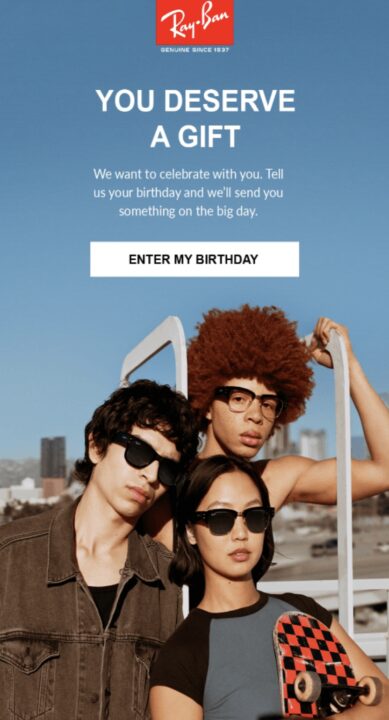
3 tips for successful lifecycle email marketing
As effective as they are, lifecycle email marketing strategies are not set in stone. The business landscape is dynamic, and business operations may not always be linear or predictable.
So, here are some lifecycle email marketing tips to help you make the most out of this strategy:
1. Set key performance indicators
The only way to track the effectiveness of your lifecycle email marketing strategy is to set key performance indicators (KPIs). By tracking your KPIs, you can figure out where you stand in comparison to your goals.
For instance, you can use email marketing metrics like open and conversion rates to gauge your campaign performance. Based on the analysis, you can determine what works and what doesn’t and tweak your emails accordingly.
Remember to align KPIs to your business goals and keep them relevant to the lifecycle stage.
2. Segment your audience for personalized content
Customers’ needs change at each stage of lifecycle email marketing, so you need to get email segmentation right to provide personalized experiences.
When you have a well-segmented audience, you’ll be able to craft emails that are laser-focused on their needs and preferences. This creates unique customer experiences that encourage brand loyalty and boost your business.
Use email personalization to offer products based on their interests, demographics, and recent purchases. If the products or the content of your email are in line with their interests, they’ll more likely relate to them.
3. Avoid overuse of urgency techniques
While it’s important to create a sense of urgency that wins customers over, you don’t want to overdo it. Overusing it dilutes its effect and won’t lead to the same levels of urgency among prospects.
The same also goes for the frequency of your emails. You don’t want your lifecycle email marketing campaigns to come across as spammy. If you overuse urgency techniques, you’re putting your brand at risk of subscriber fatigue, which can significantly impact brand loyalty.
Hence, you must strike a balance. Create a sense of urgency only when needed, and give customers the space to make decisions independently.
Wrap up
Lifecycle email marketing is the way you can smoothly move your audience through your funnel. All you have to do is provide them with relevant and targeted content throughout their lifecycle with your business.
So, if you’re trying to convert your subscribers to life-long customers, lifecycle email marketing is the way to go.
But make sure you set clear KPIs, use targeted lifecycle emails at each stage, and personalize the customer experience for best results.
And most importantly, use an email marketing tool that can help you manage these email campaigns well.
Source from Omnisend
Disclaimer: The information set forth above is provided by omnisend.com independently of Alibaba.com. Alibaba.com makes no representation and warranties as to the quality and reliability of the seller and products.
